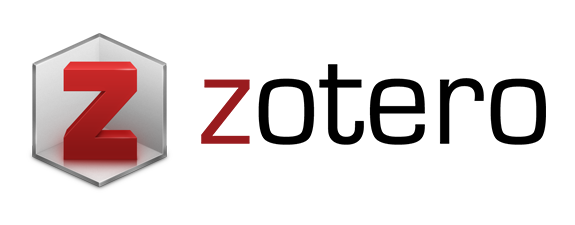Dotriacontal Number System in Computer and Error Detection
Abstract
n this this paper for the first time, we have formulated the dotriacontal number system using existing number systems like binary, and hexadecimal numbers. The dotriacontal number is one with a base of 32, containing 32 single-character digits or symbols. Each symbol contains five binary digits. This number system can be used in computers for reducing memory consumption and for memory specification. Generally, the computer memory addresses are displayed in five hexadecimal integers. If the computer memory addresses can be showed in four dotriacontal integers rather of five hexadecimal integers, the memory consumption will be reduced. It also can be used to increase the number of MAC addresses, IPv4 and IPv6 addresses. MAC (Media Access Control) address can be constructed as six deckles or 12 integers of the dotriacontal numbers instead of six octet hexadecimal digits. The IPv4 address can be defined in 8 integers of dotriacontal number that is 240 that is 1099511627776 address, and also the IPv6 address can be designed in 32 digits of the dotriacontal number that is 2160 or 1.46150164E48 addresses. The dotriacontal number system can be effective to detect error message using the checksum method. Typically, the checksum method is used by a binary or hexadecimal number system but the checksum method can be easily applied in the dotriacontal number system to detect error messages. The proposed work of this paper will be implemented if the dotriacontal code is executed and the memory specification is defined as a 10 bits deckle system instead of 8 bits byte.
Keywords
Full Text:
PDFReferences
G. W. Leibnitz, “Explication de l’arithmétique binaire”, Académie royale des sciences, 1703. Ads-00104781. https://hal.archives-ouvertes.fr/ads-00104781/document
or Explanation of Binary Arithmetic, De mathematische schriften von Gottfried Wilhelm Leibnitz, vol. VII, pp 223—227, 1703. https://www.leibniz-translations.com/binary.htm
J. Nystrom’s, “A New System of Arithmetic and Metrology, called the Tonal System”, pp 263-275, 337-348, 402-407 (concluded), and illustrated, including a folding plate. In Journal of the Franklin Institute, third series vol. 46 overall vol. 76, 1863, 432pp.
Fiete, I. R., Seung, H. S., “Neural network models of birdsong production, learning, and coding”. In Squire, L.; Albright, T.; Bloom, F.; Gage, F.; Spitzer, N. New Encyclopedia of Neuroscience, 2007.
Dover Publications, “Number Word and Number Symbols: A Culture History of Numbers Paperback”, Inc., New York, November, 1969, 2011(Republication).
Sheraz A. K., M. Moosa, “Protocols and Mechanisms to Recover Failed Packets in Wireless Networks: History and Evolution”, IEEE, July, 2016.
J. G. Fletcher, “An Arithmetic Checksum for Serial Transmissions,” IEEE Trans. Comm., vol. 30. No. 1, pp. 24/-252, Jan. 1982.
P. Deutsch and J.-L. Gailly, “ZLIB Compressed Data Format Specification Version 3.3”, IETF RFC 1950, May 1996.
A. Nakassis., “Fletcher’s error detection algorithm: How to implement it efficiently and how to avoid the most common pitfalls”, Computer Communication Review, 18(5):63–88, Oct. 1988.
K. Sklower., “Improving the efficiency of the OSI checksum calculation. Computer Communication Review”, 19(5):44–55, Oct. 1989.
D. Sheinwald, J. Satran, P. Thaler, and V. Cavanna. “Internet protocol small computer system interface (iSCSI) cyclic re-dundancy check (CRC) / checksum considerations. Network Working Group Request for Comments (RFC) 3385, Sept. 2002.
N. R. Saxena and E. J. McCluskey, “Analysis of Checksums, Extended-Precision Checksums, and Cyclic Redundancy Checks,” IEEE Trans. Computers, vol. 39, no. 7, pp. 969-975, July 1990.
A. M. Usas, “Checksum versus Residue Codes for Multiple Error Detection,” Proc. Eighth Ann. Int’l Symp. Fault-Tolerant Computing (FTCS ’78), p. 224, 1978.
S. C. Tzou Chen and G.S. Fang, “A Closed-Form Expression for the Probability of Checksum Violation,” IEEE Trans. Systems, Man, and Cybernetics, vol. 10, no. 7, pp. 407-410, July 1980.
C. Jiao and L. Schwiebert, “Error Masking Probability of 1’s Complement Checksums”, Proc. 10th Int’l Conf. Computer Comm. and Networks (ICCCN ’01), pp. 505-510, Oct. 2001.
Y. Desaki, K. Iwasaki, Y. Miura, and D. Yokota, “Double and Triple Error Detecting Capability of Internet Checksum and Estimation of Probability of Undetectable Error”, Proc. Pacific Rim Int’l Symp. Fault-Tolerant Systems (PRFTS ’97), pp. 47-52, Dec. 1997.
J. Stone and C. Partridge, “When the CRC and TCP Checksum Disagree,” Computer Comm. Rev., Proc. ACM SIGCOMM ’00, vol. 30, no. 4, pp. 309-319, Oct. 2000.
J. Stone, M. Greenwald, C. Partridge, and J. Hughes, “Performance of Checksums and CRC’s over Real Data,” IEEE/ACM Trans. Networking, vol. 6, no. 5, pp. 529-543, Oct. 1998.
C. Partridge, J. Hughes, and J. Stone, “Performance of Checksums and CRCs over Real Data,” Computer Comm. Rev., Proc. ACM SIGCOMM ’95, vol. 25, no. 4, pp. 68-76, Oct. 1995.
Nalysis and symbolic execution,” ACM Trans. Inf. Syst. Secur., vol. 14, no. 2, pp. 1–28, 2011, doi: 10.1145/2019599.2019600.
D. Natarajan, “Number systems and binary codes,” Lect. Notes Electr. Eng., vol. 623, pp. 95–119, 2020, doi: 10.1007/978-3-030-36196-9_5.
P. Koopman, K. Driscoll, and B. Hall, “Selection of Cyclic Redundancy Code and Checksum Algorithms to Ensure Critical Data Integrity,” Natl. Tech. Inf. Serv., no. March, p. 111, 2015, [Online]. Available: https://www.abbottaerospace.com/downloads/dot-faa-tc-14-49-selection-of-cyclic-redundancy-code-and-checksum-algorithms-to-ensure-critical-data-integrity
DOI: https://doi.org/10.15408/aism.v6i2.33291
Refbacks
- There are currently no refbacks.

This work is licensed under a Creative Commons Attribution-ShareAlike 4.0 International License.
EDITORIAL ADDRESS:
Department of Information Systems, Faculty of Science and Technology,
Universitas Islam Negeri (UIN) Syarif Hidayatullah Jakarta
Faculty of Science and Technology Building, 3rd Floor, 1st Campus, Universitas Islam Negeri (UIN) Syarif Hidayatullah Jakarta
Jl. Ir. H. Juanda No. 95, Ciputat Timur, Kota Tangerang Selatan, Banten 15412, Indonesia.
Tlp/Fax: +622174019 25/+62217493315.
E-mail: aism.journal@apps.uinjkt.ac.id, Website: https://journal.uinjkt.ac.id/index.php/aism

This work is licensed under a Creative Commons Attribution-ShareAlike 4.0 International License.
Applied Information System and Management (AISM) | E-ISSN: 2621-254 | P-ISSN: 2621-2536
https://journal.uinjkt.ac.id/index.php/aism






